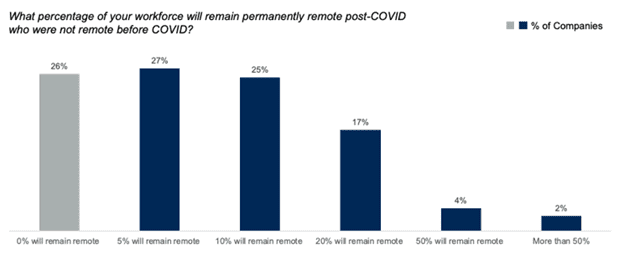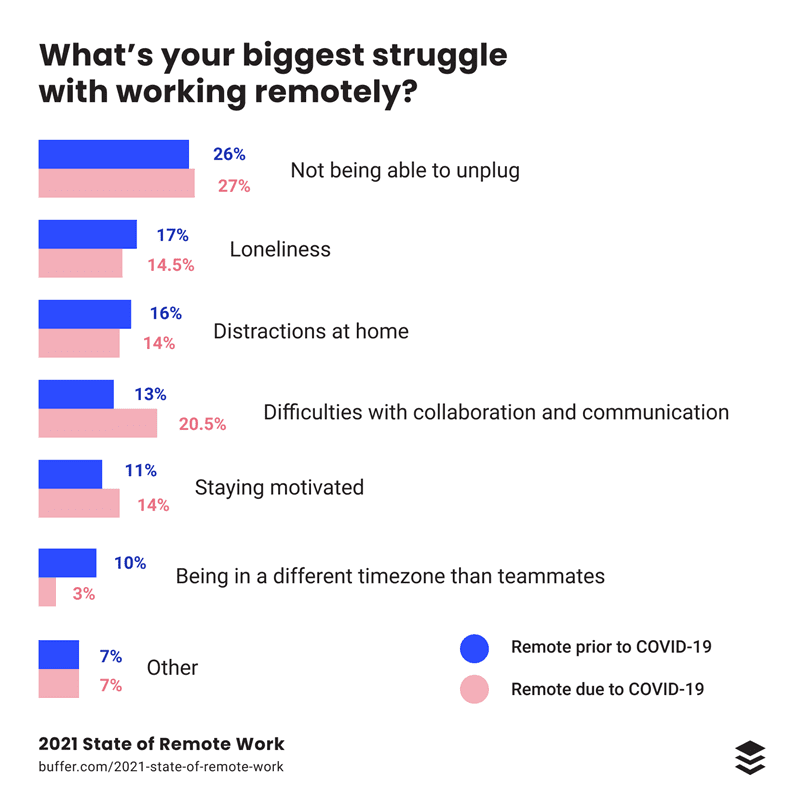Learn How to Make Remote and Hybrid Environments Work for You!
Remote and hybrid work environments are here to stay and may continue to increase. CNP provides some of the most pertinent facts about remote working and how you can boost productivity through cloud-based solutions.
While remote and hybrid work environments were already increasing before 2020, the pandemic forced companies to allow remote work so they could continue operating in the face of a global disaster. Though Covid remains a threat with the Delta variant wreaking havoc, many companies are struggling with determining their workforce structure and employee expectations.
The statistics around remote work continue to fluctuate, but here are some key facts and figures you may need to know to determine the best path forward for your workforce:
58.6% of the American workforce is working remotely currently
Over half of the American population works remotely at least part of the time and 41% of those workers are fully remote. This is quite an increase from the 17% of American employees who worked remotely 5 days or more per week before the pandemic hit.
5.7 million U.S. employees work from home half of the time or more
According to statistics from Global Workplace Analytics, 5.7 million US employees are working from home at least half of the time. These 2019 statistics show a significant increase from 3.9 million in 2015. While remote and hybrid work models were on the rise before the pandemic, Covid-19 created a global shift no one could have predicted.
92% of employees now expect to work from home
at least 1 day a week
And in the same survey from Owl Labs, 80% expect to work from home at least 3 days a week. Plus Bloomberg learned that 39% of 1,000 employees surveyed would jump ship if their boss wasn’t flexible about their working remotely. Furthermore, 65% of respondents in one survey report wanting to be full-time remote employees post-pandemic, while 31% of current remote employees want a hybrid remote work environment moving forward.
Since 2020, people have been meeting by video calls 60% more
Videoconferencing became “the new normal," a term which we may have exhausted at this point. This has required companies to determine the best software to keep communication and productivity high as people became spread out across the globe.
74% of companies plan to permanently shift to some percentage of remote work
According to Gartner, of that 74%, approximately a quarter of them say that 20% or more of their workforce will remain remote. Meanwhile, only 26% say that none of their team will remain permanently remote after Covid.

Employers save an average of $11,000 per
half-time remote employee
Statistics from a 2019 study by Global Analytics found that employers saved an average of $11,000 per half-time remote employee. Looking at a full-time remote employee? It’s estimated that every full-time remote worker is reducing company costs by $22,000. a term which we may have exhausted at this point. This has required companies to determine the best software to keep communication and productivity high as people became
spread out across the globe.
Employees save an estimated $4,000 to $6,000
a year working remotely
Due to savings in expenses from gas and coffee to lunches and other work-related expenditures, remote employees are seeing a yearly savings of $4,000 a year and in some instances, $6,000. Remote employees also save an average of 40 minutes daily from commuting.
Remote working reducing greenhouse gas emissions by over 600,000 cars
Finally, remote working is good for the environment by cutting down on commuting pollution. If 3.9 million people work from home at least half-time, that reduces greenhouse gas emissions by an amount of 600,000 cars, according to the State of Telecommuting. That amount of reduction is akin to planting 91 million trees to offset the same level of emissions, according to 2017 data from Global Workplace Analytics.
Remote Workforce Concerns
We’ve established that some sort of remote or hybrid work environment is expected from employees and acceptable to most CEOs, and there are many pros to continuing to work remotely. However, there are a few issues that can arise from migrating to a permanently remote or hybrid work environment:

How to make a remote workforce work for you
With the option of a remote or hybrid work environment being so important to employees, it makes sense that companies will want to determine a solution to keep productivity high, employees happy, and reduce any security risk. If you are looking to adopt a permanent remote workforce, here are a few steps to make sure it works for your team:
If you’d like a free assessment of your current communications solutions or would like more information on CNP solutions from preferred UCaaS vendors such as Mitel or Ring Central and Network Infrastructure vendors like Microsoft Azure, please reach out to info@cnp.net or call us at 888.973.3737.
